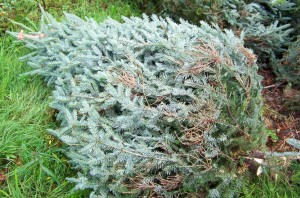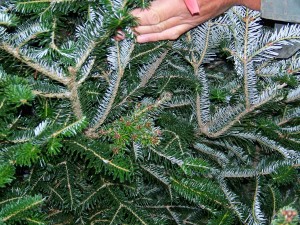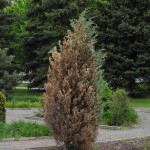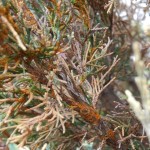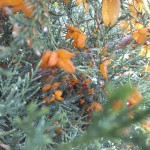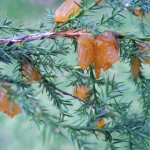Check for Fir Rust Disease
Fir Broom rust is becoming more common in New York as the number of fir tree plantings increase. This disease produces a proliferation of shoots “witches brooms” that can make the tree unsalable.
The fall and the upcoming sale season, are a good times to see if it is present in the field. When taking off the bottom limbs of trees be sure to take notice if any brooms are present. Also when the trees come in during harvest season keep an eye out.
The disease often shows up on the lower branches first where the rust fungus benefits from increased moisture in the shaded lower canopy. The lower branches are also to the source of the spores that are coming from the chickweed plants. The infection of the firs happens in the spring when rust spores travel from chickweed to fir tree needles at bud break. With enough moisture those spores can germinate, penetrating the needles and later in the season producing spores on the needles that can only infect chickweed, continuing the cycle. Both mouseear and common chickweed are susceptible to this disease. These weeds often grow unnoticed amongst grasses in Christmas tree fields.
There are no fungicides registered to control this disease on fir trees. Fortunately it can be managed by controlling the chickweed in the field with broadleaf herbicides.
For more information see this factsheet: http://nysipm.cornell.edu/factsheets/n_gh/fir_broom_rust.pdf

